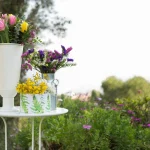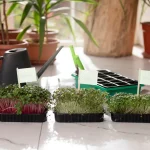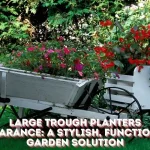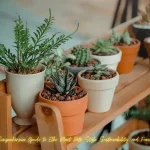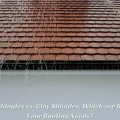Every homeowner with a yard has felt it—that nagging sense that the garden needs attention, but no clear idea where to start. The grass looks a bit shaggy. Weeds are creeping into the flower beds. Dead leaves are piling up near the fence. The edges along the walkway have gone soft and fuzzy. It all needs work, but which tasks actually make a difference, and which ones are just busy work that won’t change how the yard looks or functions?
The truth is, most people waste time on garden tasks that don’t move the needle while ignoring the handful of jobs that actually keep a yard looking maintained and healthy. Understanding the difference between essential maintenance and optional perfectionism can save hours every week and prevent burnout from trying to keep up with every little thing.
The Non-Negotiables: What Actually Keeps Your Yard Alive
Some garden tasks aren’t optional—they directly impact plant health and prevent problems that get expensive or difficult to fix later. Mowing at the right height and frequency matters because grass that’s cut too short or too infrequently becomes weak and prone to weeds. Most lawns do best when cut to about three inches, and waiting too long between mows stresses the grass and leaves clumps of clippings that smother the turf underneath.
Watering correctly ranks high on the list of tasks that matter. Shallow, frequent watering creates weak root systems, while deep, less frequent watering encourages roots to grow down where they can access moisture during dry spells. The difference shows up in how well grass survives summer heat and how much time gets spent dragging hoses around.
Dealing with leaves in the fall prevents real damage. A thick layer of wet leaves blocks sunlight and traps moisture against the grass, creating dead patches and encouraging fungal problems that persist into spring. For yards with a lot of tree coverage, getting leaves cleared before they mat down saves the lawn from suffocating. A leaf vacuum speeds up the process significantly compared to raking, and the mulching function reduces volume so there’s less hauling to the curb or compost pile.
Edging might seem cosmetic, but it serves a practical purpose beyond looks. Clean edges along walkways, driveways, and beds create a barrier that keeps grass from creeping into areas where it doesn’t belong. Without regular edging, lawns gradually expand into flower beds and hardscaping, making everything look fuzzy and undefined. The good news? Edging doesn’t need to happen weekly—every two to three weeks during the growing season usually keeps things looking intentional.
The Tasks That Feel Important But Really Aren’t
Bagging grass clippings is the classic example of wasted effort. Unless the grass got extremely long between cuts, clippings break down quickly and return nutrients to the soil. Bagging them removes nitrogen that the lawn could use and creates extra work—stopping to empty the bag, hauling it to the curb, buying bags if your mower needs them. Mulching mowers chop clippings fine enough that they disappear into the turf within a day or two.
Raking up every single leaf from garden beds in the fall often does more harm than good. A light layer of leaves in planting areas acts as natural mulch, insulating roots and breaking down into organic matter that improves soil. The obsession with bare soil in beds is mostly aesthetic and actually removes a protective layer that would help plants through winter. The exception is when leaves pile up so thick they smother perennials or small shrubs—then they need thinning out, but total removal isn’t necessary.
Deadheading flowers religiously throughout the season takes time that could go elsewhere. Yes, removing spent blooms encourages more flowering on some plants, but many perennials and annuals keep blooming just fine without constant grooming. Deadheading makes sense for plants where it significantly extends the display (like roses or petunias), but pulling every faded flower off every plant in the garden yields diminishing returns compared to the time invested.
Weeding every single weed the moment it appears leads to burnout fast. The reality? Some weeds don’t matter. A few dandelions scattered across a large lawn barely register visually. Weeds in the back corner that nobody sees don’t affect anything. The weeds that matter are the ones in highly visible areas, the aggressive spreaders that take over if left unchecked, and anything going to seed that will create hundreds more weeds. Targeting those specifically makes weeding manageable instead of endless.
Where the Real Visual Impact Comes From
Here’s what actually makes a yard look maintained: clean edges, consistent mowing, and clear walkways. Those three elements create the impression of care even if other areas aren’t perfect. A lawn with crisp edges along the driveway and sidewalk looks intentional. Grass cut to an even height across the whole yard looks tended. Paths and patios free of debris and encroaching plants look used and loved.
Trimming back plants that overhang walkways or hide house numbers makes a bigger difference than most flower bed maintenance. Overgrown shrubs blocking windows or paths make a property look neglected, while the same yard with those few problem plants trimmed back suddenly looks acceptable. It’s not about perfect pruning—it’s about keeping pathways clear and maintaining sight lines.
Mulch in beds creates instant visual improvement. Fresh mulch covers bare soil, suppresses weeds, and makes planting areas look finished. The plants themselves could be average, but a clean layer of mulch makes everything look more polished. This is one task where the payoff in appearance far exceeds the effort involved.
Weeding the most visible areas has outsized impact. Getting weeds out of the front flower beds near the entrance, along the driveway, and in any prominent containers makes the whole property look better maintained. Meanwhile, weeds in the far back corner or in areas barely seen from the house or street don’t register the same way. Concentrating weeding effort where people actually look creates better results than trying to achieve weed-free status everywhere.
The Seasonal Reality Check
Not everything needs attention all season long. Spring requires more effort—getting beds cleaned up, starting mowing again, addressing winter damage, dealing with the first flush of weeds. Summer shifts to watering and mowing maintenance. Fall brings leaf cleanup and putting the garden to bed. Winter requires almost nothing in most climates.
Trying to maintain peak spring effort all season long guarantees burnout. The gardeners who stick with it year after year are the ones who match effort to seasonal needs rather than trying to keep everything perfect constantly.
The other reality? Different areas of the yard can have different standards. The front yard that everyone sees gets more attention. The backyard can be more casual. Side yards that nobody uses except to access the trash cans don’t need the same level of care as entertaining areas. This isn’t about neglect—it’s about being strategic with limited time and energy.
What This Actually Means for Your Schedule
Focus garden time on the handful of tasks that prevent problems or create the most visible improvement. Mowing, edging, clearing major debris, and maintaining key sight lines should happen regularly. Everything else becomes a lower priority that happens when there’s time and energy, or gets skipped entirely if it doesn’t.
The goal isn’t perfection—it’s having a yard that looks intentional and functions for how it gets used, without consuming every weekend. Some weeds will always exist. Leaves will blow back in after cleanup. Gardens will never be “done.” The sustainable approach accepts this and focuses on the work that matters most rather than chasing an impossible standard.


